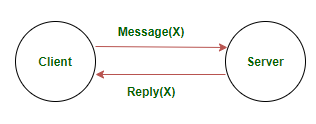What is Raft?
Raft is a consensus algorithm that is designed to be easy to understand. It’s equivalent to Paxos in fault-tolerance and performance. The difference is that it’s decomposed into relatively independent sub-problems, and it cleanly addresses all major pieces needed for practical systems. We hope Raft will make consensus available to a wider audience, and that this wider audience will be able to develop a variety of higher quality consensus-based systems than are available today.
Hold on - what is consensus?
Consensus is a fundamental problem in fault-tolerant distributed systems. Consensus involves multiple servers agreeing on values. Once they reach a decision on a value, that decision is final. Typical consensus algorithms make progress when any majority of their servers is available; for example, a cluster of 5 servers can continue to operate even if 2 servers fail. If more servers fail, they stop making progress (but will never return an incorrect result).
Consensus typically arises in the context of replicated state machines, a general approach to building fault-tolerant systems. Each server has a state machine and a log. The state machine is the component that we want to make fault-tolerant, such as a hash table. It will appear to clients that they are interacting with a single, reliable state machine, even if a minority of the servers in the cluster fail. Each state machine takes as input commands from its log. In our hash table example, the log would include commands like set x to 3. A consensus algorithm is used to agree on the commands in the servers’ logs. The consensus algorithm must ensure that if any state machine applies set x to 3 as the n_th command, no other state machine will ever apply a different n_th command. As a result, each state machine processes the same series of commands and thus produces the same series of results and arrives at the same series of states.
Info
Consensus means multiple servers agreeing on same information, something imperative to design fault-tolerant distributed systems.
- Single Server system : The client interacts with a system having only one server with no backup. There is no problem in achieving consensus in such a system.

- Multiple Server system : The client interacts with a system having multiple servers. Such systems can be of two types :
- Symmetric : Any of the multiple servers can respond to the client and all the other servers are supposed to sync up with the server that responded to the client’s request, and
- Asymmetric : Only the elected leader server can respond to the client. All other servers then sync up with the leader server.
Raft consensus algorithm explained
To begin with, Raft states that each node in a replicated state machine(server cluster) can stay in any of the three states, namely, leader, candidate, follower.
- Only a leader can interact with the client; any request to the follower node is redirected to the leader node.
- A candidate can ask for votes to become the leader.
- A follower only responds to candidate(s) or the leader.
To maintain these servers’ status(es), the Raft algorithm divides time into small terms of arbitrary length. Each term is identified by a monotonically increasing number, called term number. This term number is maintained by every node and is passed while communications between nodes. Every term starts with an election to determine the new leader. The candidates ask for votes from other server nodes(followers) to gather a majority. If the majority is gathered, the candidate becomes the leader for the current term. If no majority is established, the situation is called a split vote and the term ends with no leader. Hence, a term can have at most one leader.
Raft algorithm uses two types of Remote Procedure Calls (RPCs) to carry out the functions:
- RequestVotes RPC is sent by the Candidate nodes to gather votes during an election
- AppendEntries is used by the Leader node for replicating the log entries and also as a heartbeat mechanism to check if a server is still up. If heartbeat is responded back to, the server is up else, the server is down. Be noted that the heartbeats do not contain any log entries.
Leader election
In order to maintain authority as a Leader of the cluster, the Leader node sends heartbeat to express dominion to other Follower nodes. A leader election takes place when a Follower node times out while waiting for a heartbeat from the Leader node. At this point of time, the timed out node changes it state to Candidate state, votes for itself and issues RequestVotes RPC to establish majority and attempt to become the Leader.